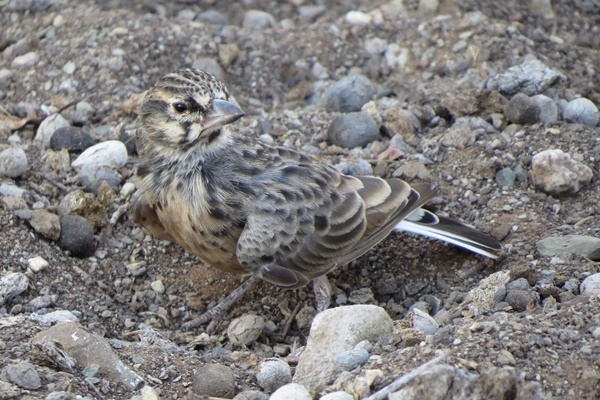Cover image. Sclater’s Lark by Alan Collett – Carnarvon District, Northern Cape – BirdPix No. 142244
Identification
Sclater’s Lark is a small species with a stocky build and a large, horn-coloured beak.
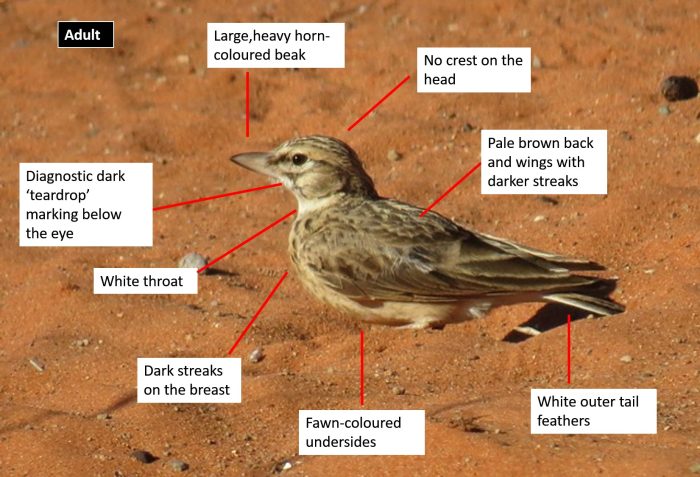
Photo by Pamela Ruth Kleiman
These birds have an overall buff-brown colouration. Its most distinctive feature, apart from the beak, is the diagnostic dark ‘tear-drop’ marking below the eye.
The upperparts are buffy grey-brown with dark streaks. The throat is white and gives way to buff-coloured underparts. The breast and belly have a warmer tone than the rest of the body. There are variable bold black streaks on the breast.
In flight the tail appears fairly short and dark above with broad white outer tail feathers.
The sexes are alike.
Juveniles resemble the adults but they have less distinct facial patterning.

Photo by Zenobia van Dyk
Status and Distribution
The Sclater’s lark is endemic to Southern Africa, its distribution is entirely confined to the Nama Karoo. The majority of records are from the Northern Cape province, with scattered records from Southern Namibia. It is most abundant on the stony plains of Bushmanland in the Northern Cape with outlying records from near Mariental, (central Namibia), Beaufort West (Western Cape) and Aberdeen (Eastern Cape).
It is both uncommon and local in occurence, especially in Namibia. It is currently listed as Near-threatened.
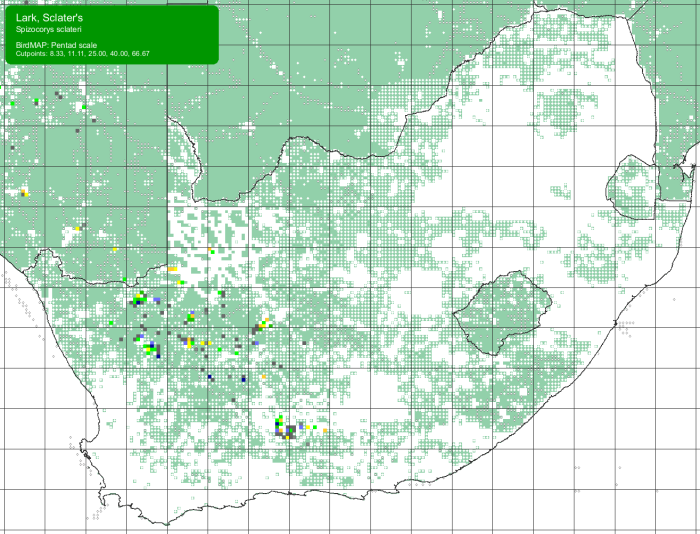
Details for map interpretation can be found here.
Habitat
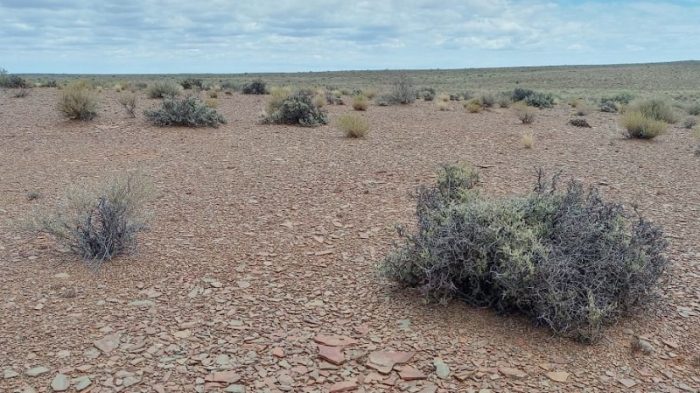
Carnarvon District, Northern Cape
Photo by Ryan Tippett
Sclater’s Lark inhabits arid to semi-arid plains with low, sparse shrubs, grasses and extensive bare patches of gravel and stones. It is most closely associated with open areas of quartz pebbles or shale gravel.
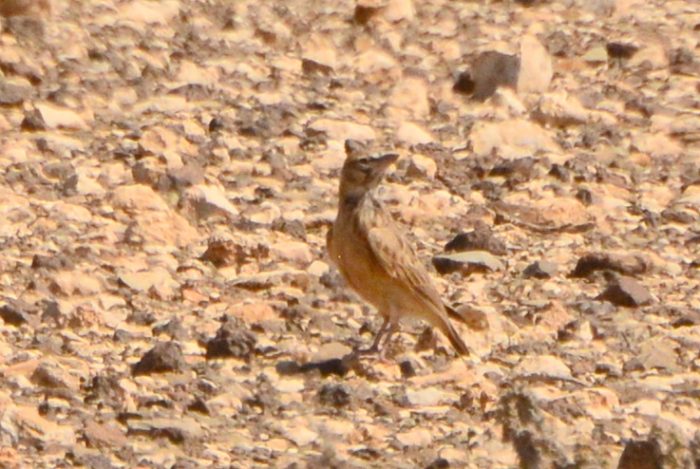
Photo by Ryan Tippett
Behaviour
Sclater’s Lark is an opportunistic and highly nomadic species, moving into areas after rain before nesting and then moving on. They are found in pairs when breeding and usually in small, dispersed flocks of up to 25 birds when not breeding.
Forages by walking with a slow, plodding gait on bare, open plains where there are few other birds. They are known to turn over small flat stones while foraging. Sclater’s Larks feed mostly on Harvester Ants (Messor spp.) and Harvester Termites (Hodotermes spp.) as well as a range of seeds picked off the ground.
Drinks frequently, particularly when breeding. They often drink with the eyes partially closed. Typically flies to water in small groups and the flight is fast and dipping, accompanied by intermittent calling.
Sclater’s Larks are well camouflaged and are often only seen when flushed. They usually fly quite far before settling. Roosts in a shallow depression in open gravel plains.
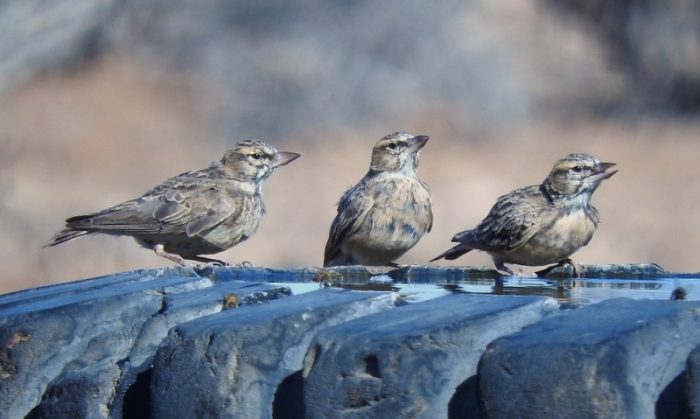
Photo by Etienne Marais
Sclater’s Larks are Monogamous, solitary nesters, but some nests may only be several meters apart.
The nest is a tidy cup composed of fine, grass leaves, stems and awns. The nest is built inside a hollow in the substrate which is excavated by both sexes using their feet. The nest sits flush with the edge of the hollow and small stones are often placed around it. The stones presumably help to disguise the nest from predators. Most nests are situated in completely exposed situations in bare stony patches, far from shrubs or grass tufts. The nest is always within 1km of a water source.
Nesting in the open conceals the nest from predators which mostly forage around the base of vegetation. However, nesting in the open can expose the eggs or chicks to intense heat, something to which the Sclater’s Lark is well adapted. The incubating parent will stand over the nest to shade it, normally facing into the breeze or towards the sun. The incubating bird may pant continuously and raise its feathers and half close the eyes to aid in cooling. The dense nest lining may also help to insulate eggs and small chicks from high ground temperatures.
Egg laying takes place mainly from August to November and breeding takes place during the driest time of the year. Very high ground temperatures from December to March likely prevent breeding during this period. Just one egg is laid per clutch and is incubated by both sexes.
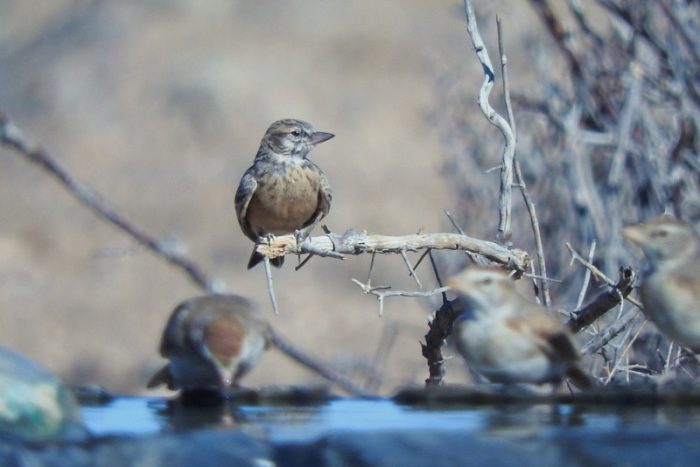
Photo by Ettienne Marais
Further Resources
Species text adapted from the first Southern African Bird Atlas Project (SABAP1), 1997.
The use of photographs by Alan Collett, Etienne Marais, Pamela Ruth Kleiman and Zenobia van Dyk is acknowledged.
Virtual Museum (BirdPix > Search VM > By Scientific or Common Name).
Other common names: Namakwalewerik (Afrikaans); Alouette de Sclater (French); Sclaters Kurzhaubenlerche (German); Namagua-leeuwerik (Dutch); Cotovia de Sclater (Portuguese)
Recommended citation format: Tippett RM 2023. Sclater’s Lark (Spizocorys sclateri) Biodiversity and Development Institute. Available Online at http://thebdi.org/2023/02/10/sclaters-lark-spizocorys-sclateri/
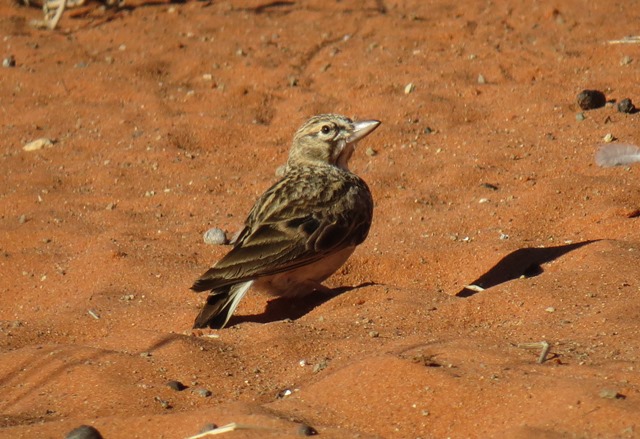
Photo by Pamela Ruth Kleiman

